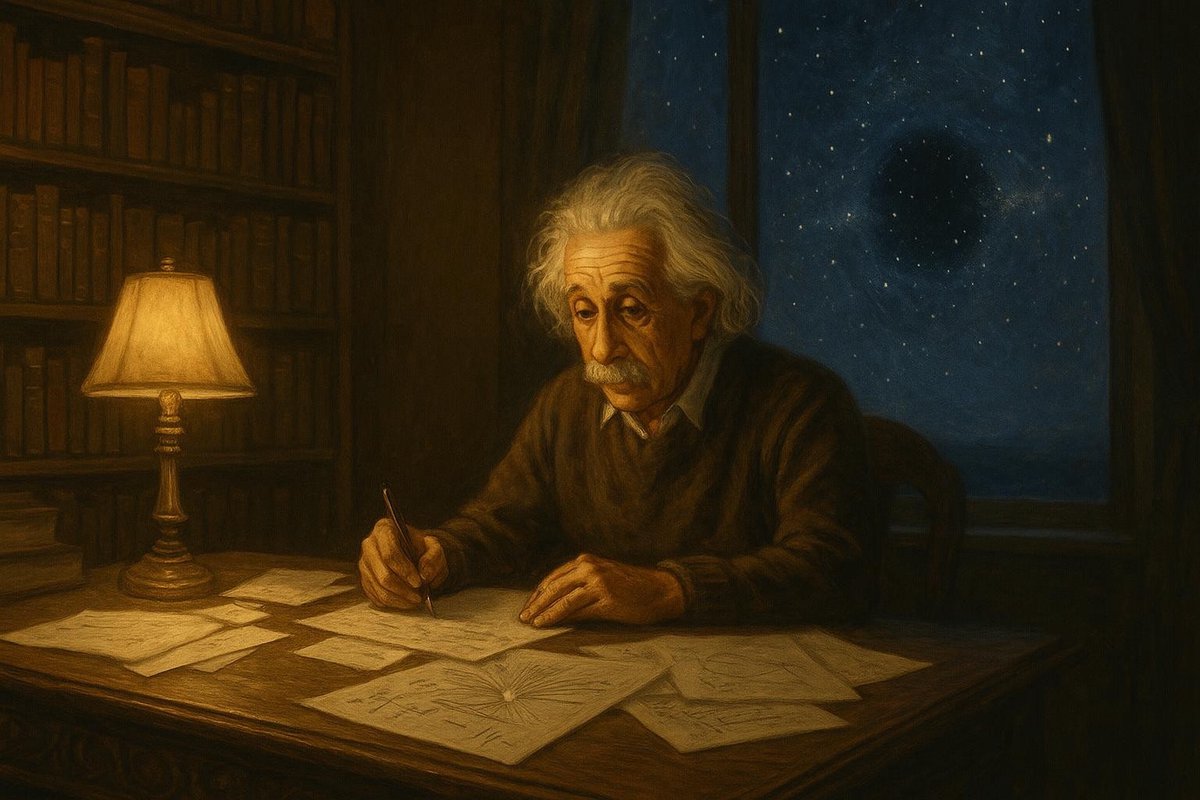
The early 20th century was a period brimming with scientific curiosity and innovation. Among the towering figures of this era was Albert Einstein, whose mind was a crucible for ideas that would forever change our view of the universe. Many people believe that Einstein’s genius lay not just in complex equations but in his ability to visualize complex theories through thought experiments. This approach led him to what became known as the Theory of Relativity, offering a new understanding of gravity and motion that defied conventional physics. But how did these mental exercises lead to such groundbreaking theories?
From Apples to Equivalence: A New Perspective on Gravity
Einstein imagined scenarios that questioned the established norms of physics. How would things fall in a universe where gravity wasn’t a force but a feature of space and time?
- Picture yourself in a sealed elevator, unable to see outside. If the elevator is accelerating upwards, you’d feel pressed against the floor. But would it feel any different from standing on the Earth due to gravity? This equivalence principle suggested that gravity and acceleration are indistinguishable.
- This thought led to the radical idea that gravity isn’t a force but rather the warping of spacetime by mass. Imagine a large sheet of rubber, with a heavy ball placed in the center. The ball creates a dip, and smaller balls placed on the sheet roll towards the depression. This is akin to how planets orbit stars.
Interestingly, this reimagining of gravity not as a force but as a curvature of spacetime was a giant leap from Isaac Newton’s apple-centric view. It was Einstein’s mental gymnastics that paved the way for this paradigm shift.
Riding Beams of Light: Visualizing Special Relativity
In his quest to understand light, Einstein asked himself what it would be like to chase a beam of light at the speed of light itself. Many people would find this impossible to imagine, yet it was this very thought that cracked open the door to Special Relativity.
- Consider two observers, one stationary and one moving at a constant velocity, each observing the same beam of light. Despite their relative motion, both measure the same speed for light. How could this be?
- This surprising constancy of light speed, regardless of the observer’s motion, led to the conclusion that time and space are not absolute. Instead, they are interwoven into a four-dimensional fabric known as spacetime, where time can stretch and contract depending on relative motion.
No wonder this theory left the scientific community in awe; it introduced the concept that time is a flexible dimension, forever changing how we perceive motion and the passage of time.
Curved Paths and Gravitational Lensing: Predictions of General Relativity
Einstein’s imagination didn’t stop with static thought experiments; he also predicted how his theories could be observed and tested in the real world. One of these predictions was gravitational lensing.
- Imagine light bending around a massive object like a star or galaxy, similar to how a lens bends light to focus an image. This is exactly what Einstein proposed mass would do to light, curving its path as it travels through warped spacetime.
- In 1919, during a solar eclipse, Arthur Eddington observed starlight bending around the sun, confirming Einstein’s predictions. This was not just a triumph for Einstein but a testament to the power of thought experiments in leading to verifiable scientific discovery.
These predictions transformed not only our understanding of gravity but also how we observe the universe, influencing modern astronomy and cosmology.
The Legacy of Thought Experiments: Shaping Modern Physics
Einstein’s revolutionary ideas did more than just solve age-old scientific puzzles; they sparked the imagination of future generations of physicists. But why are thought experiments still so pivotal in science?
- They allow scientists to explore the boundaries of what is currently known, pushing the limits of theory and experimentation without the immediate need for physical testing.
- Thought experiments encourage creative problem-solving and help articulate complex concepts in a more tangible way. They remain a vital tool in theoretical physics and other scientific fields.
As time goes on, Einstein’s legacy continues to inspire, reminding us that sometimes, the most profound discoveries begin with an imaginative question.
The universe is a vast, enigmatic place, and thanks to Einstein’s thought experiments, our understanding of it has deepened profoundly. These mental explorations have not only redefined gravity and motion but also opened doors to new realms of scientific inquiry. Of course, the journey doesn’t stop here; each discovery invites new questions, ensuring that science is a never-ending adventure.
Fuel Someone Else’s Curiosity
Did this article spark a new interest in the fascinating world of physics? Sharing it could inspire someone else to explore the mysteries of the universe. Spread the word, ignite curiosity, and let others join the quest for knowledge that Einstein started with his incredible thought experiments. Who knows, the next great scientific breakthrough might just begin with a simple spark of curiosity.

Leave a Reply